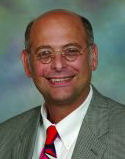Rounds in motion
Our goal was to round with precision, though it was more likely we would meander due to the effects of Brownian motion, bouncing randomly around the hospital, starting at one point and ending up somewhere else.
It was a warm winter day, unusual in and of itself in the frozen winter tundra of the upper Midwest. The team slowly gathered for rounds. Usually we would start the morning “running the list” while sitting around a table, sipping on a brownish, thinnish liquid trying to pass itself off as coffee. Today we had decided to go mobile and make walking rounds.
Our goal was to round with precision, though it was more likely we would meander due to the effects of Brownian motion, bouncing randomly around the hospital, starting at one point and ending up somewhere else, diffusing and confusing. What are rounds after all but a circular repetitive route, like a guard at a prison or a sentry on a cold, dark night? Some say the term was coined when William Osler circled the Johns Hopkins Hospital. There are also rounds of chemotherapy, rounds of ammunition, musical rounds, grand rounds and ground round, but we must move on.

Our first patient was in respiratory isolation. She had presented with a running nose, shaking chills and a rattling cough, so we rolled on into her room. Her X-ray showed an atypical infiltrate. We were all happy to be on the catwalk in our fashionable, yellow-striped, isolation garb when we heard her hacking cough. The patient wondered if she might have walking pneumonia. Given her X-ray we were more worried about galloping consumption.
The next patient was on telemetry, and the nurse was running a strip. He'd been admitted with stuttering TIAs. The monitor showed he had beats that were skipping and T-waves that were flipping. He had a murmur that was blowing, a valve that was flopping and a pacemaker that was wandering, though his pulse was bounding. It was a head-scratcher. Should we transfer him to the ICU? We fell back on the internist's best friend: We ordered some labs.
Our team waddled to the next room, letting a patient with a shuffling gait go by us in the hallway. The next admission on our service was a medical student just back from a rotation in Mauritania. He complained of a creeping rash on his ankle. It had started a week ago, and now he had a rasping cough. It pays to have an international team. Our alert intern instantly recognized cutaneous larval migrans. The location gave it away—the little annelid hitchhiker was Ancylostoma. The whole topic made our skins crawl, though no one on the team had formication.
We were falling behind so we got a move on. We were late for a combined medicine/neurology conference. There were several presentations on some interesting topics, including marching seizures and stiff person, restless leg, and Dandy-Walker syndromes.
We had a few gastroenterology patients to see. One had bulging flanks, another shifting dullness. The flapping hands of asterixis were waving to us from many rooms. There were rolling and sliding hernias. There may have been a case of adynamic ileus, but with rampant C. diff there was no general shortage of bowel movements.
Our next patient of the morning was a very interesting young man, recently moved here from Laos. Two months ago he had had a climbing protracted elevation of his temperature, a sore throat and a rash, all of which had eventually resolved. There was no physician available in his small village to see him.
On arrival in the U.S., he had developed emotional lability with inappropriate laughing and crying, attributed to the stress of moving. He then developed rapid irregular jerking motions of the limbs, ballismus and facial grimacing, and finally grip weakness. The neurology service was consulted. This was one case that would make the next conference. The diagnosis: Sydenham's chorea, a.k.a. St. Vitus Dance. Thomas Sydenham was known as the English Hippocrates. St. Vitus is the patron saint of dancers, comedians and epileptics.
The final visit of the morning was more emotion than motion. The patient had presented with weeping ulcers. It was a very sad situation. She had an angry rash and a healing lesion that had developed proud flesh. She had a nervous stomach, but a relaxed sphincter. We all felt emotionally unsettled as we exited her room.
This was hospital medicine, not ambulatory care, but we had trudged though the wards for three long hours. Creeping and crawling, running and skipping, flapping and flipping, marching and shuffling, stiff and floppy, crawling and galloping, rocking and rolling. The whole thing gave us motion sickness.



